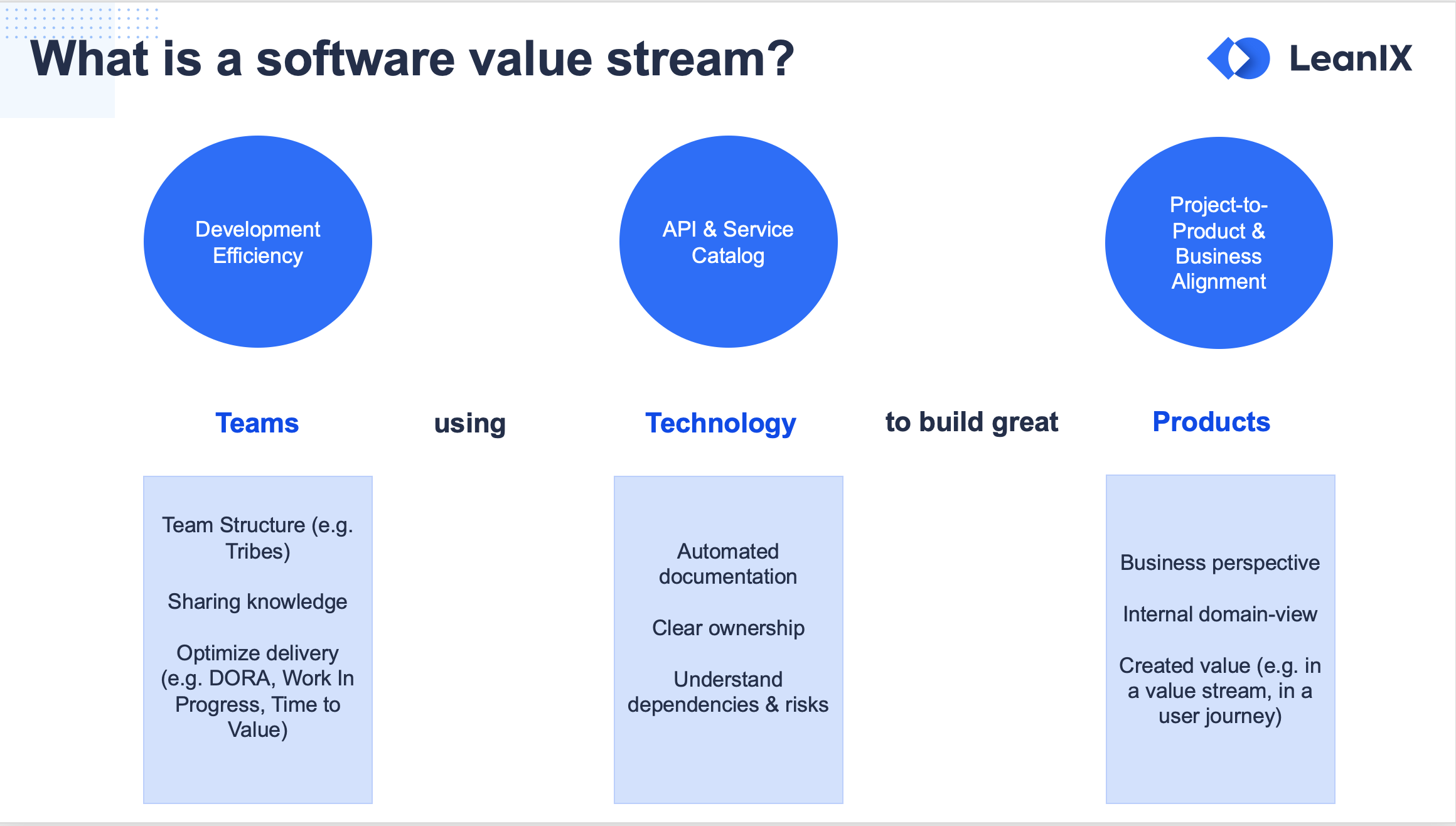Overview
What is LeanIX Value Stream Management (VSM)?
LeanIX Value Stream Management (VSM) connects teams, technology, and processes to deliver reliable software efficiently. LeanIX is purpose-built for modern software development organizations, offering features, capabilities, and integrations helping customers establish visibility into how they deliver software.
The solution caters to various stakeholder needs. By discovering software services, teams, products, APIs, and libraries across the DevOps toolchain, developers find a solution to automate documentation and serve as an internal developer portal, hence freeing up their time. Furthermore, by setting the service architecture into team ownership and business product context, engineering leadership receives insights helping them to assess and prioritize the current state of affairs.
How does it work?
LeanIX simplifies the complex topic of Value Stream Management with a best-practice, out-of-the-box approach:
-
Discover your data from different sources all over your engineering tool chain - e.g. leverage our ready-to-use integrations for GitHub Repository. Read more about our integrations Getting started.
-
Based on the discovery, VSM focuses on three major concepts: Teams, Technology & Products

Why should I care?
LeanIX VSM addresses two core pain points:
- As an engineering manager / CTO, I want to optimize software delivery in my organization. Pictures like the following are typical - great tools within silos, but to overarching alignment.
- As a modern Enterprise Architect, I want an automated overview of our self-developed software. This unlocks use cases like technology risk & standard management, but even more important creates a joint language with the product & engineering organization. Learn more about LeanIX EAM here
Core use cases
Once you have populated VSM with data from connected sources of your ecosystem you are able to work on the following use cases:
- Discover and catalog your services & APIs
- Establish Software Bill of Material (SBOM) management and insights
Why choose LeanIX?
We have been there – done that: Our cloud-native company struggled with complexity once our service landscape passed the 20-mark bar. The complexity of the services introduced was no longer feasible to be managed by storing information in the heads of our dear colleagues or on spreadsheets. Furthermore, our engineers wanted to learn and continuously improve the business impact their code has.
So, as we are driven by automation, we began building VSM to help us automate service documentation to make information visible throughout the organization, facilitate developers to obtain it themselves and act on the generated insights.
Please Note
In case you started to use VSM before June 30th 2022, you might find the relevant documentation here.
In case of doubt, please reach out.
Updated 9 months ago
